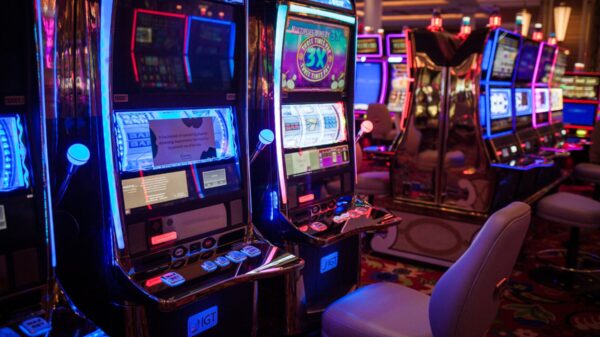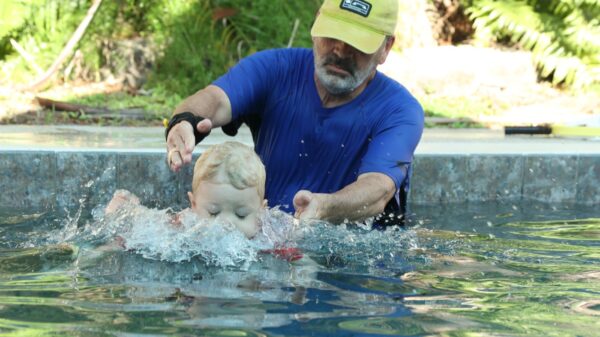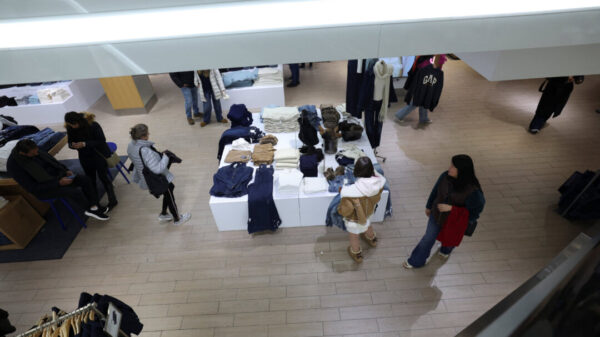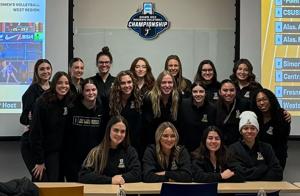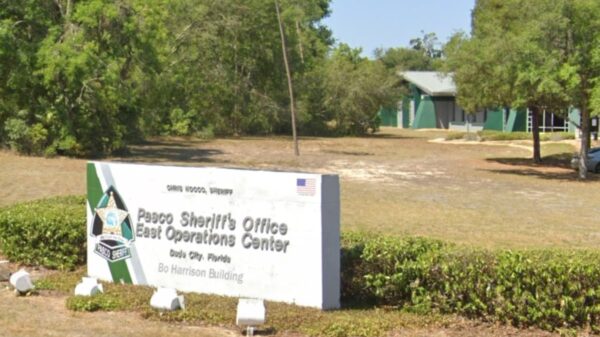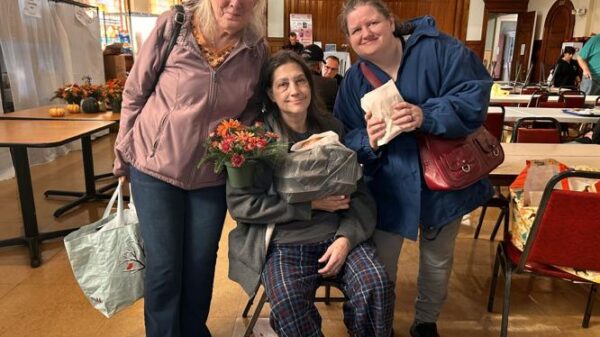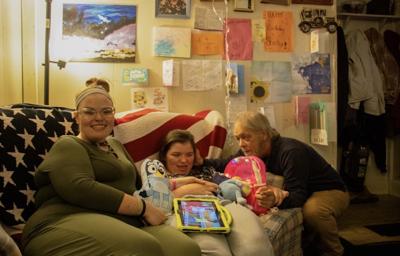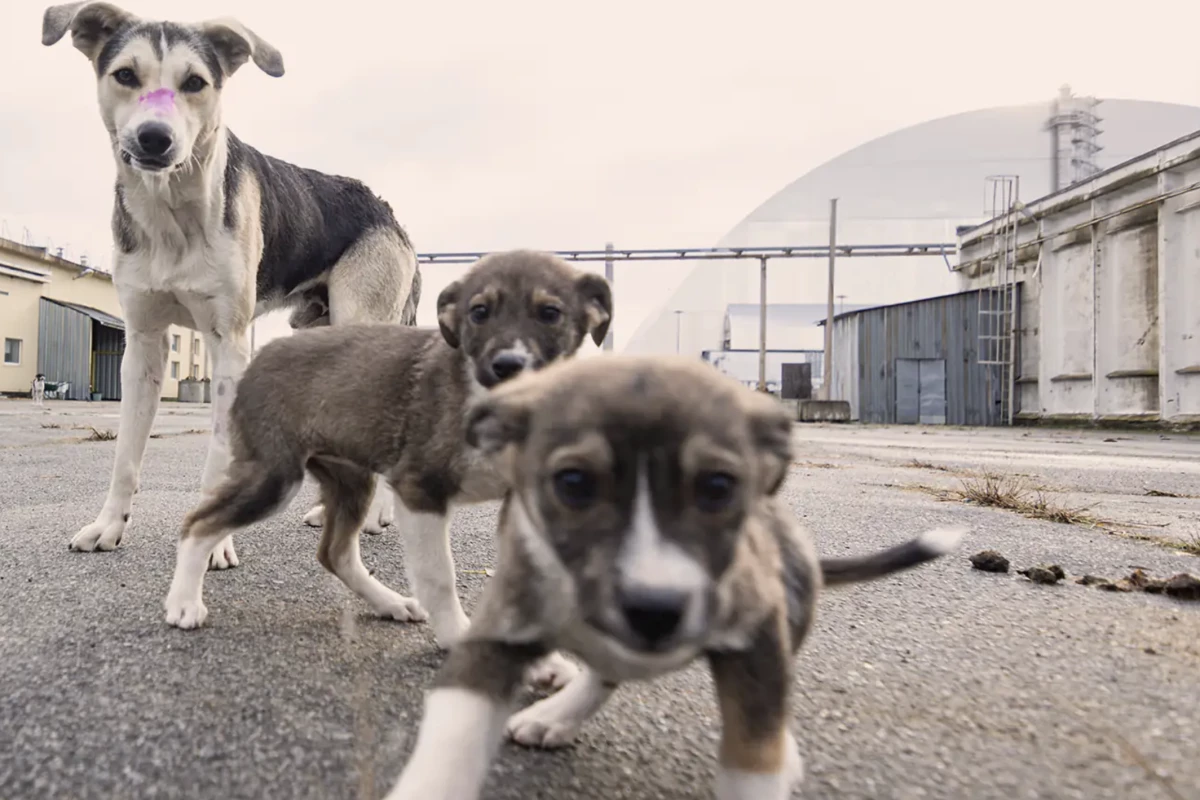The discovery of stray dogs with blue fur in the Chornobyl exclusion zone has ignited intrigue and scientific investigation. Located on the northern edge of Ukraine, the zone surrounding the abandoned Chornobyl Nuclear Plant has become home to thousands of animals, including approximately 900 dogs descended from pets left behind after the nuclear disaster in 1986. These dogs now roam freely in a landscape shaped by one of the world’s worst nuclear accidents.
The emergence of the blue-furred dogs has prompted various theories, including the possibility of radiation affecting their coats or a mutation altering their phenotype. However, according to Timothy A. Mousseau, Scientific Advisor for the Dogs of Chornobyl Program and a biologist at the University of South Carolina, the blue color likely resulted from the dogs rolling in waste materials. “The blue dye likely came from a tipped-over port-a-potty where the dogs were rolling around,” Mousseau explained in a recent social media post. He emphasized that the blue coloration was due to unsanitary behavior rather than any radiation effects. Subsequent veterinary checks revealed no signs of radiation-related illness or genetic damage among the dogs.
Uncovering Genetic Distinctions
The Dogs of Chornobyl Program, run by the Clean Futures Fund, has been providing care and conducting research on these animals since 2017. A team led by Mousseau has conducted a detailed study of the dog populations in the exclusion zone, discovering that they are genetically distinct from domestic dogs found elsewhere in Ukraine and Europe. The researchers examined the genetic structure of 302 dogs across three free-roaming groups within the power plant’s grounds and surrounding areas.
Their analysis indicated that the isolation of these dog populations has altered their genetic makeup over time. The researchers identified 15 distinct family groups, with the largest spanning multiple locations within the radioactive exclusion zone. This genetic diversity suggests that dogs migrate within the zone to find mates, helping to maintain a varied gene pool in an otherwise isolated environment.
Impacts of Radiation and Human Absence
The study also identified significant genetic differences between the dogs living near the power plant and those in urban areas. Notably, dogs around the plant exhibited a higher frequency of genetic markers associated with shepherd breeds, likely due to the historical use of German Shepherds and East-European Shepherds in Soviet security roles. In contrast, “pinscher-clade” DNA associated with breeds like Dobermans appeared at low frequencies in both populations, indicating shared ancestry rather than long-term isolation.
While some research has indicated potential adaptations to radiation exposure, Mousseau’s team found no evidence of increased mutation rates among the dogs living in the most radioactive parts of the exclusion zone. “Despite speculation about genetic resistance to radiation, any differences are likely due to isolation rather than adaptation,” he noted.
The broader ecosystem within the exclusion zone has also shown resilience. Wolves, lynx, wild boar, and other species have thrived in the absence of human activity, although the long-term impact of radiation on these populations remains a subject of ongoing research. Various studies have indicated that while radiation can harm individual animals, the overall population dynamics are influenced more by the lack of human interference than by radiation alone.
As research continues, the story of the Chornobyl dogs serves as a reminder of the complex interplay between environmental factors and wildlife health. The dogs, with their unique adaptations and challenges, are a fascinating focal point for understanding life in a region once deemed uninhabitable. Mousseau concluded, “The majority of studies have not found evidence of adaptive evolution among the organisms in the Chornobyl Zone, but the resilience of these populations, including the dogs, is both remarkable and worthy of further exploration.”


